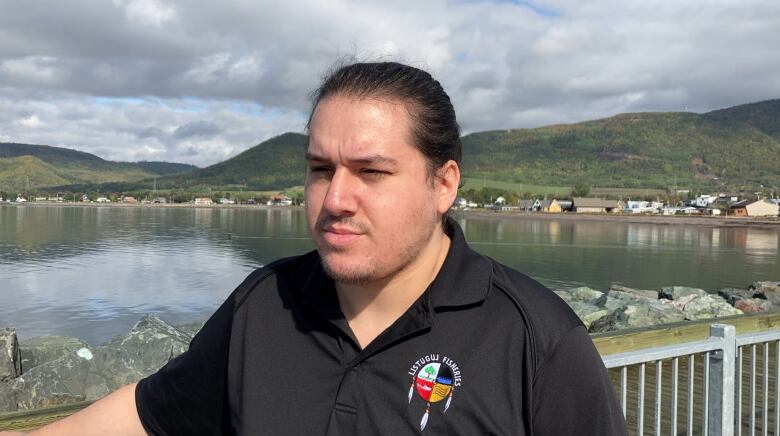For the first time, Listuguj Mi'gmaq Rangers oversee fall lobster count
Mi'kmaq First Nation gets a feed of lobster, rest of harvest will be sold to market

A fishing boat approaches the coast of the Baie des Chaleurs around 10 a.m. on Tuesday.
The boat is chock-a-block full of lobster.
It was a good catch day for this fishing crew just one of 10 boats that left from the Carleton Wharf four hours earlier.
The fall lobster fishery in the nearby community of Listuguj, Que., launched on Sept. 28.
For the past 20 years, the two-week event has been a tradition for the Mi'kmaq First Nation in the Gespe'gewa'gi and Mi'gma'gi Territories.
"We're proud of what we're doing with the fisheries how we are exercising our right to fish," said James Metallic-Sloan, manager of community fisheries.

Metallic-Sloan says from a sovereignty perspective, the management of the fisheries and dockside protocols have come a long way.
For the first time, the Department of Fisheries and Oceans (DFO) has agreed to an enforcement protocol that acknowledges the role of the Listuguj Mi'gmaq Rangers in governing the fishery.
The Mi'gmaq Rangers are a community enforcement agency that derives its authority entirely from Indigenous law.
Their role was created after violence erupted in 1981 when Quebec provincial police officers stormed the reserve to destroy and seize equipment and suppress Listuguj's salmon fishery.
They are there to count and track lobsters, traps and boats when they come to Carleton Wharf.

Ten per cent of the daily catch goes to the community, and the rest is sold commercially.
This averages out to three lobsters per household in the community of 4,000 people.
"It does help our elders to be fed and our people to earn a bit of a living, and help get ready for the winter," says Listuguj Chief Darcy Gray.
After the lobsters have been counted, they are loaded onto trucks and shipped 55 kilometres west to Listuguj.
Waiting at the fisheries building in Listuguj are three industrial-size pots of boiling water.
A group of six women is there ready to receive the lobsters and cook them.
The process is a well-oiled machine under the direction of Pam Isaac, who has been doing this for 10 years.

"The lobster fishery is very important because it's a good balance for the reserve, for the people. It's like a feast for them." says Isaac, an aquaculture technician.
Isaac knows which pot the lobster goes into, how hot the water should be, how long it should stay and how to stack them.
"The bigger lobsters go to the bottom because if we're not careful they are strong enough to push their way out of the pot!"

Isaac removes rubber bands from the lobsters' claws in an easy, rhythmic motion.
"This lobster is from our local fishermen so we feed our people," she said. "And of course our elders. We love our elders."
The catch is delivered to elders at their homes, and the rest of the community pick up theirs at the dock.
"It's fun to see people lining up and waiting for the lobster and reconnecting, laughing and teasing," said Chief Gray.
"It's not a large-scale fishery, but it is an important fishery for us as a community."
The lobster fishery ends on Oct. 10.
With files from Lance Delisle and Aimee Louw












_(720p).jpg)


 OFFICIAL HD MUSIC VIDEO.jpg)
.jpg)



























































































